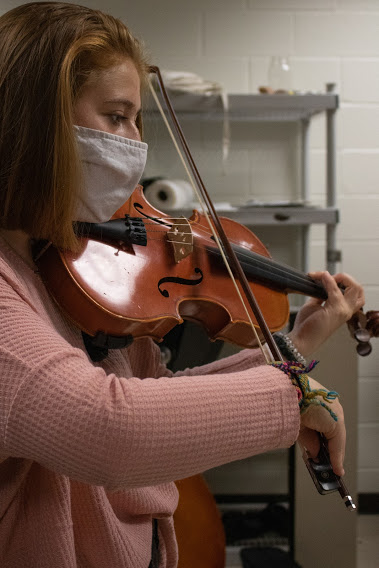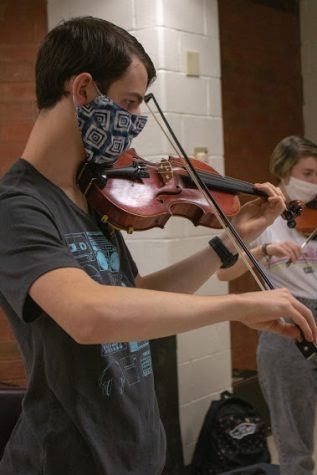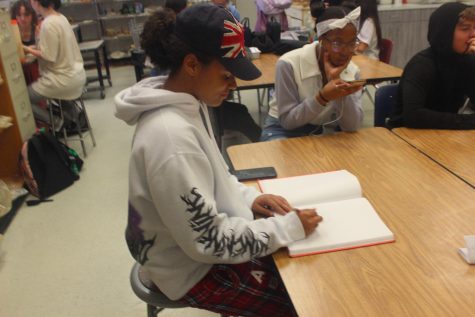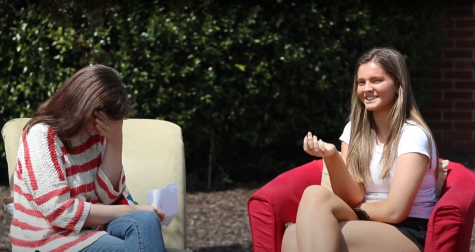Seven techniques to practicing an instrument

Carsyn Campbell practices Eine Klein Nachtmusik with the chamber group. She earned the position of first chair viola in the orchestra.
Practicing an instrument can be stressful, especially when perfecting a challenging piece. There are plenty of minute details that must be accounted for. When you organize practice and use different techniques, the process can become much less stressful and pay off with improvements to one’s ability.
Using a tuner, whether it is a virtual or physical tuner, can help make each note sound the best possible. It can be placed on your stand while playing, in easy view, so that you can see how accurate each note is.
Joey Dagostino is a sophomore and has played the violin for six years. He uses a tuner app called ‘TonalEnergy Tuner’ while practicing.

“Throughout my practice sessions, I will use the tuner to check notes that may be unfamiliar or too high for my ear to hear perfectly right off the bat. It has a welcoming, friendly aspect to it and does the job exceedingly well,” Dagostino said.
Practicing one line at a time can help perfect any piece you are playing. When practicing, make sure to work on tuning, rhythm, and tempo. Work on one line at a time, and once you have gotten that line down, move on to the next until the end.
If you are having trouble getting the piece right, take it at a slower tempo and increase the tempo in increments of five beats per minute until you reach the designated speed. This technique makes it easier to progress to the right tempo because you are taking it step by step.
“I often start at a slower, effortless tempo and gradually work my way up to more of a performance tempo over time for the pieces I play,” Dagostino said.
In any piece you play, you should be keeping the tempo in your head. Another helpful idea is subdivision, splitting up the beats, within each measure, especially if the piece is fast or has a difficult rhythm. You can tap your left foot or count in your head to effectively keep tempo.
“I often subdivide the beats into the most common or relevant notes in the music I play, whether it be in my head, with the metronome, or both,” Dagostino said.
Before playing, warm up with a scale in the key your piece is in. A short two or three-octave scale will do because it is only for warming up and establishing the key in your head. This helps you get the flats, naturals, or sharps in tune instead of going in fresh.
A lot of pieces have recordings online; it is a beneficial idea if you play along with it to get the tempo and rhythm right. Playing it with a recording can help you have a better idea of what the piece supposed to sound like.
Carsyn Campbell is a junior and is first chair viola in the orchestra. She frequently practices with a recording.
“It gives me something to reference in my own playing and it gives me a way to critique my playing in comparison with the recording,” Campbell said.
When practicing, take short breaks and remember to breathe, in order to not get stressed. Any piece can be overwhelming, but with a combination of these techniques it can be less stressful.
“To not get stressed while I play, I try to breathe as much as I can,” Campbell said.
All these techniques can help you improve very quickly and become a better musician. They are easy ways that will make playing a lot smoother because they allow you to break a piece down and focus on certain details. Remember to breathe and always enjoy playing.








